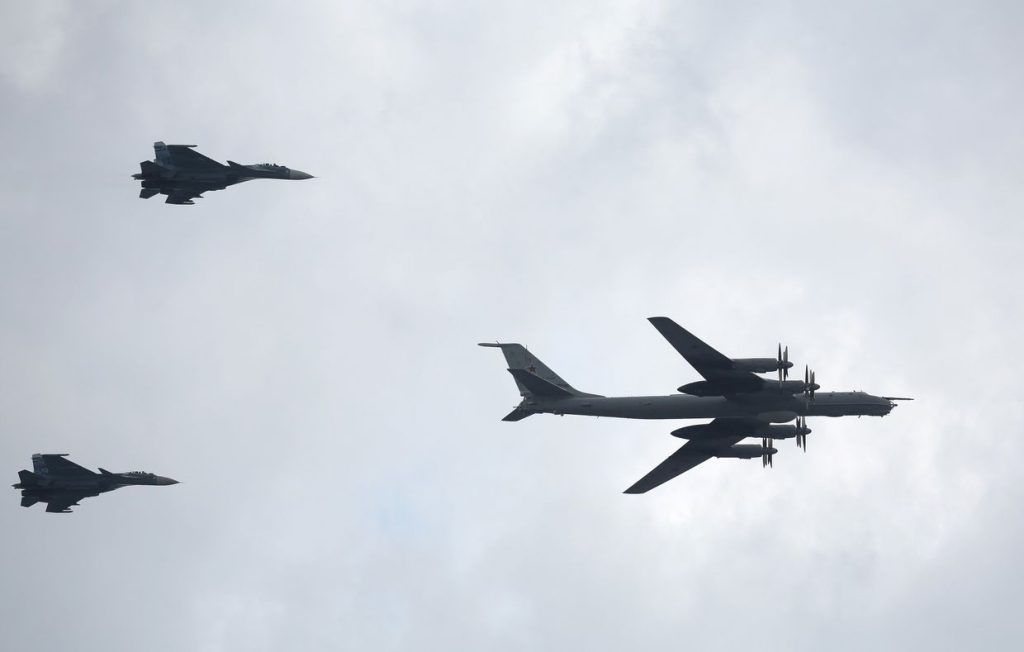Two Russian IL-38 military aircraft were detected and tracked operating in the Alaska Air Defense Identification Zone (ADIZ) on Sept. 14, marking the third such incident in one week, according to the North American Aerospace Defense Command (NORAD). The Russian planes did not violate U.S. or Canadian airspace and were not seen as a threat. Earlier in the week, NORAD detected two Russian military aircraft on Sept. 11 and a pair of Russian Tu-142 military aircraft on Sept. 13. NORAD defines the ADIZ as a stretch of international airspace that requires the identification of all aircraft in the interest of national security. This summer, NORAD scrambled fighter jets to intercept Russian and Chinese military planes in the ADIZ on July 25 and detected four Russian warplanes flying in the ADIZ in mid-August.
Recent developments in Ukraine have heightened hopes that Western allies will allow long-range weapons to strike deep into Russian territory. Russia has been able to attack Ukraine from behind the border with relative impunity since the beginning of the full-scale war. In recent weeks, Ukraine has made progress in acquiring the tools necessary for long-range missile strikes, which are believed to include Russian military targets. This shift in strategy indicates a potential escalation in conflict between Ukraine and Russia, with Ukrainian forces aiming to target strategic locations within Russia. The move to allow long-range strikes signifies a shift in the dynamics of the conflict and a possible weakening of Russia’s defensive advantage in the region.
The continuous presence of Russian military aircraft in the ADIZ near the U.S. and Canada has become a regular occurrence according to NORAD. While these incidents have not escalated to the point of violating airspace or posing a direct threat, they indicate a pattern of Russian military activity near North American airspace. The ADIZ serves as a buffer zone that requires close monitoring and identification of all aircraft for national security purposes. The recent instances of Russian aircraft operating in the ADIZ highlight the need for constant vigilance and readiness on the part of NORAD to respond to potential threats or provocations in the region. The consistent monitoring and tracking of foreign military aircraft in the area demonstrate the ongoing challenges of securing North American airspace.
The escalation of tensions between Ukraine and Russia, coupled with the increased presence of Russian military aircraft near the ADIZ, raises concerns about the potential for conflict in the region. The conflict in Ukraine has already resulted in significant casualties and displacement of civilians, and the prospect of long-range missile strikes adds another layer of complexity to the situation. The involvement of Western allies in supporting Ukraine’s military capabilities further complicates the geopolitics of the region and could lead to a wider conflict involving other global powers. The continued monitoring and tracking of Russian military activity in the ADIZ by NORAD reflect the need for strategic readiness and coordination among allied forces to deter aggression and maintain stability in the region.
As tensions continue to simmer between Ukraine and Russia, the ability of Ukraine to conduct long-range missile strikes opens up new possibilities for targeting Russian military assets. The shift in strategy towards offensive capabilities indicates a willingness to take the fight deeper into Russian territory, potentially changing the calculus of the conflict. The support of Western allies in providing Ukraine with the means to carry out such strikes demonstrates a commitment to countering Russian aggression in the region. The ongoing monitoring of Russian military aircraft near the ADIZ by NORAD underscores the importance of maintaining a strong defensive posture and deterring any potential threats to North American airspace. The evolving dynamics of the conflict between Ukraine and Russia require constant vigilance and preparedness to respond to emerging challenges and ensure the security of the region.


